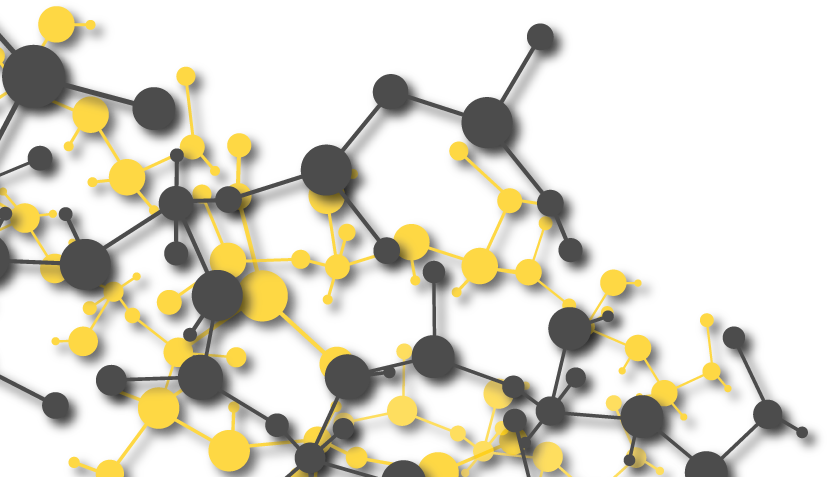Let’s take a look at the key performance parameters of EVOH (ethylene vinyl alcohol) resins from the perspective of copolymer composition (the ratio of ethylene and vinyl alcohol units. These parameters include the oxygen barrier, processing, and other attributes. EVOH resins, available at Gantrade Corporation courtesy of EVASIN, are some of the most-used thermoplastic barrier materials in flexible packaging films, pouches, bottles and rigid trays for shelf-stable foods and beverages.
EVOH resins are copolymers of ethylene and vinyl alcohol units, with the following chemical structure.
Polyvinyl alcohol, one of the two units, has exceptionally low oxygen permeability properties. However, PVOH is difficult to process by melt extrusion because its melting point (Tm about 200 °C) is above its heat degradation temperature. In addition, PVOH is water-soluble; thus, atmospheric humidity will markedly increase the oxygen transmission rate.
Alleviating this dynamic is where the ethylene comonomer unit comes into play. The ethylene monomeric unit contributes moisture and humidity resistance to the EVOH copolymer, reduces the crystallinity and melting point of the copolymer, and markedly improves melt processing characteristics. Increasing the ethylene content improves processability and humidity resistance, while sacrificing some of the gas barrier properties of the vinyl alcohol moieties.
In this article, we’ll examine the effect of varying the ratio of these two monomeric units against the overall property and application requirements in shelf-stable packaging. We will carry through this demonstration using four standard EVASIN EVOH grades available through Gantrade, ranging from ethylene contents of 29 percent (EVASIN 2951) up to 44 mole percent (EVASIN EV4405), the optimum ethylene modification range for high barrier thermoplastic EVOH resins.
Formulators usually employ EVOH in a multi-layer structure to further protect the EVOH from moisture and humidity, as well as improve mechanical properties. In three to eleven-layer constructions, the outer layers can be polyolefins, nylon resins or PET, with EVOH making up the center layer. They then use a tie-layer resin to enhance the adhesion of the EVOH to an adjacent polyolefin of PET layer. The array of EVOH resins available and possible multi-layer combinations afford a broad range of options in meeting specific application requirements.
Performance Variations with EVOH Compositions
The tables below show the trends for the various mechanical, thermal, and gas barrier properties of EVASIN EV 2951, 3251, 3851, 4451 & 4405. As you can see, the tensile and impact properties all decrease with increasing ethylene contents, while the flexibility and elongation increases. The oxygen transmission rates increase, and the moisture vapor transmission rates (MVTR) decrease with increasing ethylene content. The Tms and Tgs all decrease with increasing ethylene contents, which improves processability and allows lower extrusion temperatures, as shown in the third chart. The higher elongations at the higher ethylene contents also facilitate thermoforming performance, although special grades of EVASIN resin have been formulated for thermoforming applications, as we will describe below.
Mechanical Properties of EVASIN
EVASIN Thermal and Gas Barrier Properties
EVASIN Extrusion Temperature
The lower ethylene content EV2951 grade provides the highest gas barrier properties and can allow for down-gauging of the EVOH barrier layer. Having the highest vinyl alcohol content, the 29 mole percent ethylene grades show a greater increase in OTR (oxygen transmission rate) with increasing humidity, albeit still maintaining superior gas barrier properties. Formulators can mitigate the influence of moisture by the selection polyolefins or via PET having low moisture transition rates in the outer layers of multi-layer constructions. This process applies to dry-packaged products. For high moisture content, wet-packaged products, the opposite may be true, with nylon layers in the sandwich structure being optimum.
The high ethylene content of the EVASIN EV 4404 and EV4451 provides easier processing, long-term run stability and increased flexibility characteristics, balanced by a higher OTR and lower WVTR (water vapor transmission rate) versus the lower ethylene content copolymers. The 44 mole percent grades process well on blown and slot extrusion lines and blow molding equipment, and in deep thermoforming.
Contact Gantrade Today to Learn More about EVOH Resins from EVASIN
At Gantrade, we pride ourselves on offering a wide range of materials aimed at optimizing your products for a variety of applications. EVASIN EVOH resins deliver superior performance for a wide range of dry-packaged goods and wet-packaged products. Contact us today, and we will tailor a solution to meet your exact performance requirements.













